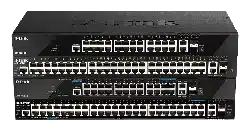Loading ...
Loading ...
Loading ...

DGS-1520 Series Gigabit Ethernet Smart Managed Switch Web UI Reference Guide
447
Parameter Description
detects DAD messages (DAD Neighbor Solicitation (NS) and DAD Neighbor
Advertisement (NA)) to build its binding database. The NDP packet (NS and NA) is
also used to detect whether a host is still reachable and determine whether to
delete a binding or not.
DHCP-PD snooping performs DHCPv6 snooping of Prefix Delegation (PD) to
setup bindings between the Delegating Router (assigned with an IPv6 prefix) and
the corresponding Requesting Router. The bindings can be used to validate the
source prefix in the packets.
Data Glean
Select to enable or disable the data-glean function here. In some circumstances
(DAD-NS packet lost or Switch reboot), a valid IPv6 address cannot be found in
the binding table for some devices and as a result traffic to and from these devices
are denied by the IPv6 source guard. The data-glean function provides a method
for the Switch to recover the lost IPv6 addresses using IPv6 Duplicate Address
Detection (DAD).
VID List
Enter the VLAN ID list used here.
Click the Apply button to accept the changes made.
Click the Edit button to re-configure the specific entry.
Click the Delete button to remove the specified entry.
To view the following window, select the IPv6 Snooping DHCP Entry Settings tab, as shown below:
Figure 9-57 IPv6 Snooping (IPv6 Snooping DHCP Entry Settings) Window
The fields that can be configured are described below:
Parameter Description
Unit
Select the Switch stacking unit ID here.
From Port - To Port
Select the range of ports that will be used here.
Binding Max Entries
Enter the maximum number of IPv6 snooping binding entries that is allowed here.
The range is from 0 to 511.
Click the Apply button to accept the changes made.
Click the Clear button to clear DHCPv6 snooping entries from the specified port.
Loading ...
Loading ...
Loading ...
